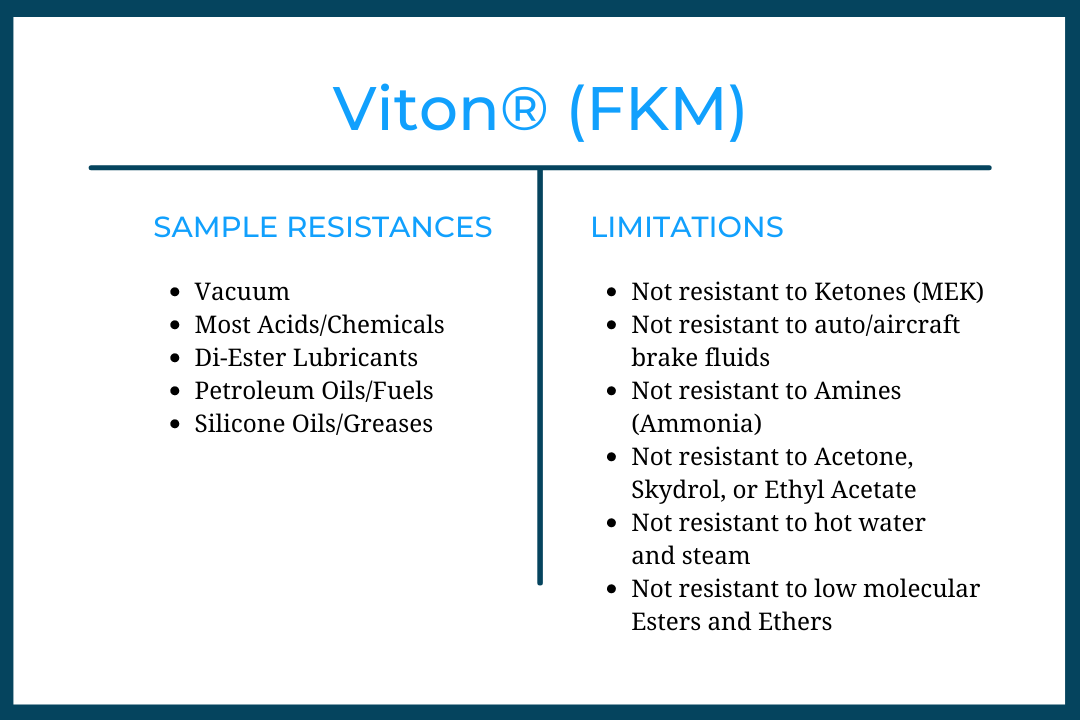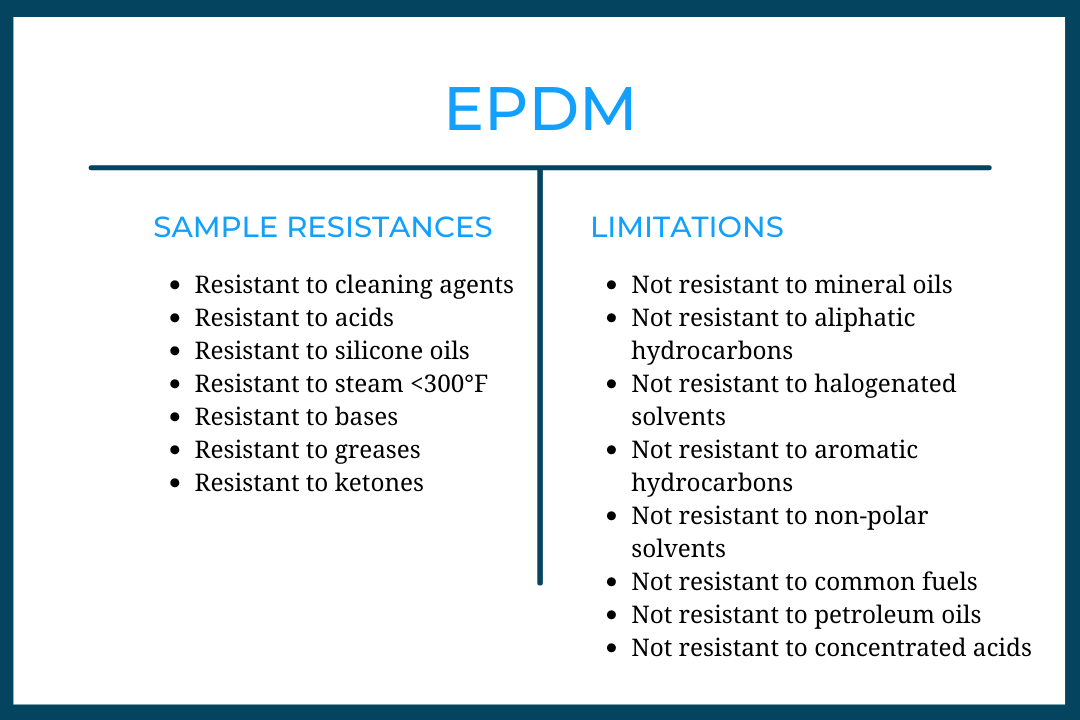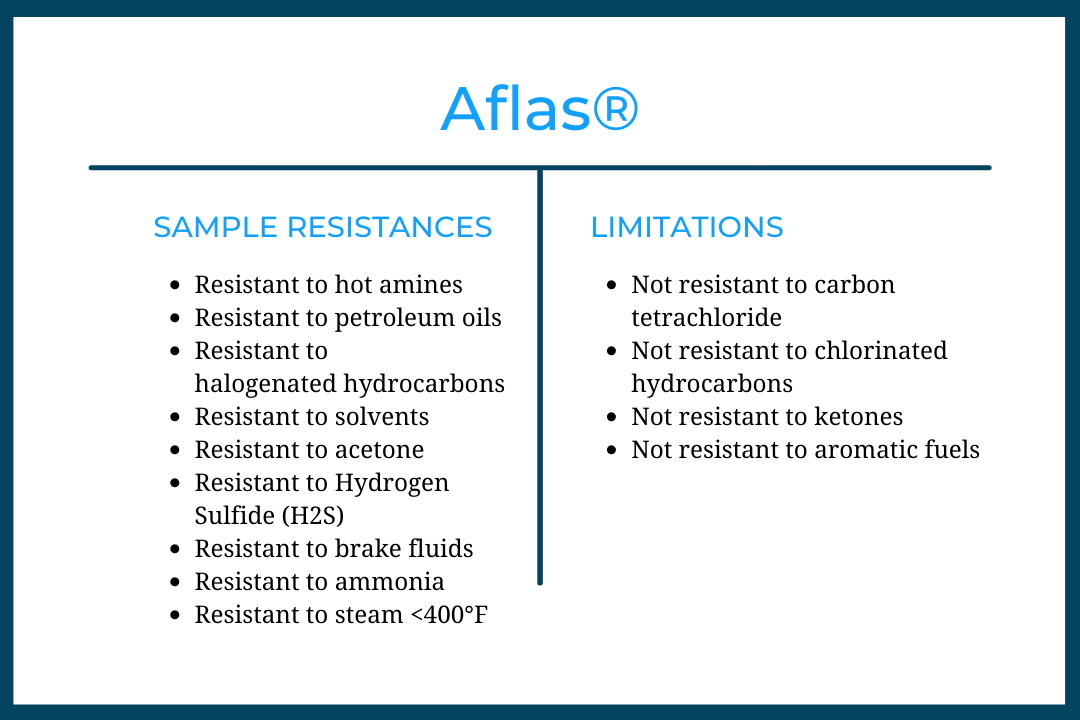AST BLOG: Considerations for O-Ring Material Selection
Choosing proper O-ring material is a critical factor in determining mechanical seal life. O-rings are circular sealing elements with circular cross-sections and are mainly used in static applications. The sizes are specified by the inside diameter and the cross-section diameter. O-ring materials used in mechanical seals as a secondary sealing surface generally fall into one of two categories: elastomers or perfluoroelastomers.
AST offers elastomer options of Viton® (FKM), EPDM and AFLAS®, or Perfluoroelastomer (FFKM) at an added cost.
An elastomer is a polymer that displays rubber-like elasticity. Depending upon the type of elastomer, the material can offer varying degrees of protection to chemicals and temperature.
Viton® (FKM) o-rings offer excellent compatibility with a range of chemicals, oils and resist temperatures up to 400°F (204°C). Viton® is also known as FKM, made of fluoroelastomer, and one of the most versatile and widely used sealing materials.
EPDM o-rings, or ethylene propylene o-rings, are a family of synthetic elastomers with lower cost steam and chemical resistance, particularly for applications involving solvents, acids and other mild chemicals.
Aflas® o-rings provide chemical, high temperature, and steam resistance. TFE/P rubber, Aflas® fluoropolymer materials provide dependable sealing performance in water, steam, bases, and caustic environments resulting in common use in the oil exploration and drilling industry.
FFKMs (by ASTM 1418 standard) (equivalent to FFPMs by ISO/DIN 1629 standard) are perfluoroelastomeric compounds containing an even higher amount of fluorine than Viton (FKM fluoroelastomers).
Perfluoroelastomers (FFKM) have improved resistance to high temperatures and chemicals, and even withstand environments where Oxygen-Plasma are present for many hours. Certain grades have a maximum continuous service temperature of 327 °C (621 °F). FFKM’s are commonly used in applications that involve contact with hydrocarbons or highly corrosive fluids, or when a wide range of temperatures is encountered.
Typical Perfluoroelastomers (FFKM) brands include Kalrez®, Chemraz® and Isolast. Although Kalrez® was the first to market and became known as the “Xerox” of FFKM o-rings, other manufacturers produce product of similar protection. Most of the FFKM brands offer a variety of compounds with focused protection on chemical resistance and/or temperature stability.
Advanced Sealing Technology has a strategic alliance with a leading US FFKM manufacturer and private label the o-rings. These FFKMs are focused on high-temperature and chemical resistance, and we maintain an inventory of o-rings for immediate delivery.
AST380 is a general-purpose carbon filled perfluoroelastomer compound that has continuous temperature capabilities to 600°F (315°C). AST380 retains its stability throughout temperature cycling and provides long service life at continuous elevated operating temperatures. AST380 has low compression set characteristics along with the broad chemical resistance found with perfluoroelastomer based compounds (refer to spec sheet AST380).
AST385 is a general-purpose carbon filled perfluoroelastomer compound that has the very broad chemical resistance found with perfluoroelastomer based compounds. Unlike some FFKM compounds, it works well in hot amines, steam and hot water. AST385 has high-temperature capabilities (continuous up to 570°F or 299°C) and low compression set characteristics. AST385 can be used in the most challenging fluid handling applications (refer to spec sheet AST385).
Kalrez® 4079 has excellent chemical resistance and good mechanical properties. kalrez® 4075 can perform in maximum service temperature of 600°F (316°C). Not recommended for use in hot water/steam applications or in contact with certain hot amines.
Kalrez ® 6375 has broad chemical resistance and mechanical properties. Kalrez ® 7075 can perform in high temperature O-Ring environments up to 620°F (325°C).
Kalrez® 7075 offers broader chemical resistance and higher temperature stability than Kalrez® 4079 or to 620°F (327°C).
Chemraz 505 is has broad chemical resistance and a temperature range of -22°F to 446°F (-30°C to 230°). Chemraz 605 features even wider range of chemical resistance as well as a greater temperature range of -4°F to 500°F (-20°C to 260°C). Chemraz 615 high temperature perflouroelastomer o-ring material can perform up to 615°F (325°C).
Isolast® J9876 is a multi-purpose perfluoroelastomer with broad-based chemical resistance and a temperature range of +19°F to +527°F (-7°C to +275°C).
Isolast® J8325 provides broad chemical resistance and thermal stability for demanding applications including high-temperature environments to 617°F (325°C).
Lubrication of O-ring seals is extremely important for installation and operation of dynamic seals as well as proper seating of static seals. The general rule for use of lubrication is: The greatest benefit in using a lubricant is obtained during the initial installation of the O-ring. Lubricants are commonly used on O-rings and other elastomeric seals. Using a suitable grease or oil during assembly helps protect the O-ring from damage by abrasion, pinching, or cutting. An additional benefit is the protection that the lubricant provides as a surface film. Proper lubrication also helps protect some polymers from degradation by atmospheric elements such as ozone and its presence help extend the service life of any O-ring.
Refer to our mechanical seal installation instructions for lubrication guidance:
https://plane-fuchsia-srpa.squarespace.com/installation-instructions
The following is our material selection guide from over 30 years of experience:
For further assistance, please call or email AST for help:
401-783-8001



